Protection of intellectual property, registering and maintaining patents in force:
- LR patents Nr.15429 A
- LR patents Nr.15273
- LR patents Nr.15068
- LR patents Nr.14998
- LR patents Nr.13662
- LR patents Nr. 15326
- LR patents Nr. 15308
- LR patents Nr. 15284
- LR patents Nr. 15274
- LR patents Nr. 14992
- LR patents Nr. 14881
- LR patents Nr. 14803
- LR Patents Nr. 14802
- LR patents Nr. 14767
- LR patents Nr. 14764
- LR patents Nr. 14730
- LR patents Nr. 14691
- LR patents Nr. 14641
- LR patents Nr. 14622
- LR patents Nr. 14455
- LR patents Nr. 14358
- LR patents Nr. 14280
- LR patents Nr. 14005
- LR patents Nr. 13942
- LR patents Nr. 13857
- LR patents Nr. 13770
- LR patents Nr. 13686
- LR patent Nr. 15529 A
- LR patent No 15560 A
LR patents Nr.15429 A. "Antena ar elektroniski maināmu virziendarbību". Izgudrotāji: I.Driķis. Īpašnieks: Elektronikas un datorzinātņu institūts. Publicēts 20.07.2019.
LR patents Nr.15273. "Ierīce attālināta kustībā esoša objekta lokalizēšanai". Izgudrotāji: Vladimirs ARISTOVS, Rolands ŠĀVELIS. Īpašnieks: Elektronikas un datorzinātņu institūts. Publicēts 20.11.2017.
LR patents Nr.15068. “Stroboskopiskais pārveidotājs ultraplatjoslas radiolokācijas signālu atklāšanai”. Izgudrotāji: K.Krūmiņš, V.Pētersons, V.Plociņš un A.Ševerdaks. Publ. Īpašnieks: Elektronikas un datorzinātņu institūts. Publicēts 20.11.2015.
1. Stroboskopiskais pārveidotājs (Fig.3), kas sastāv no komparatora 1, kam ir trīs ieejas: pārveidojamā signāla ieeja 2, strobsignāla ieeja 3, kompensācijas signāla ieeja 4, kam pieslēgta ciparu-analogā pārveidotāja 5 izeja, pie kam strobējamā komparatora 1 izeja ir pieslēgta pie kompensatora 6 ieejas, kura izeja ir pieslēgta pie ciparu-analogā pārveidotāja 5 ieejas, kas atšķiras ar to, ka, ar mērķi uzlabot stroboskopiskā pārveidotāja ekspluatācijas īpašību – ultraplatjoslas radiolokācijas signālu atklāšanas efektivitāti, kompensatora 6 izeja 7 ir pieslēgta datu komutatora 8 ieejai, pie kura vadības ieejas 9 caur strobimpulsu skaitītāju 10 ir pieslēgta strobimpulsu ieeja 3, savukārt datu komutatora 8 izeja ir pieslēgta otra datu komutatora 11 ieejai, kura vadības ieejā 12 padod vadības signālu, kas UWB signālu atklāšanas režīmā ir loģiskais „1”, bet parastajā signālu stroboskopiskās pārveidošanas režīmā ir „0”, turklāt datu komutatora 11 izeja caur invertoru 13 ir Pieslēgta summatora 14 vienai ieejai, kura otrai ieejai caur aizkaves reģistru 15 ir pieslēgta datu komutatora 8 izeja, bet summatora 14 izeja kalpo kā stroboskopiskā pārveidotāja ultraplatjoslas radiolokācijas signālu atklāšanai izeja
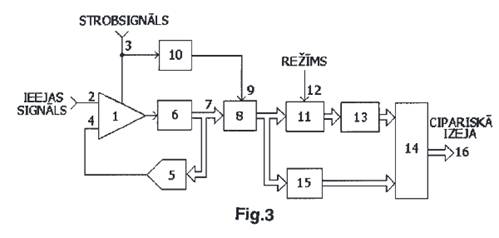
LR patent No.14998. "Ierīce ādas melanomas atšķiršanai no labdabīgas dzimumzīmes" (The device for skin melanoma distinguishing from benign naevus). Inventors: Aivars Lorencs, Ints Mednieks, Juris Siņica-Siņavskis, Dainis Jakovels, Dmitrijs Bļizņuks. Owner: Institute of Electronics and Computer science, Institute of Atomic Physics and Spectroscopy. Published: 20.08.2015.
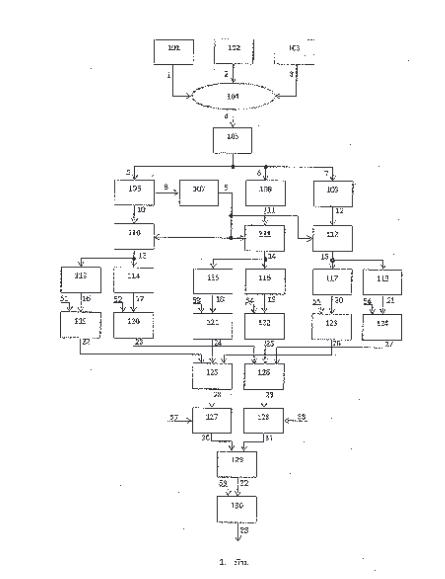
LR patents Nr.13662 “Ierīce īsu vienreizēju impulsu amplitūdas mērīšanai”. Izgudrotāji: V.Bespaļko. Īpašnieks: Elektronikas un datorzinātņu institūts. Publicēts 20.02.2008.
LR patents Nr. 15326. “Analogu signālu paātrināta pārraides metode ar impuls-platuma modulāciju un demodulāciju ar sekojošu filtrēšanu, balstītu uz impulsu platuma-fāzes pārveidojumiem " Izgudrotāji: V.Bespaļko, I.Bilinskis, J.Buls. Īpašnieks: Elektronikas un datorzinātņu institūts. Publicēts 20.05.2018.
LR patents Nr. 15308 “Mobila ierīce bezvadu sensoru tīklu un to mezglu efektīvai izstrādei mērķa vide”, Izgudrotāji Leo SEĻĀVO, Krišjānis NESENBERGS, Jānis JUDVAITIS, Didzis LAPSA, Rihards BALAŠS, Arnis SALMIŅŠ, Modris GREITĀNS, publicēts 20.03.2018.
LR patents Nr. 15284 „Notikuma taimeris ar sistemātiskās taimēšanas kļūdas stabilizāciju/Event time-tagging device with stabilization of systematic error”. Izgudrotāji: Vladimirs BESPAĻKO (LV), Jevgeņijs BULS (LV), Igors BURAKS (LV), Vadims VEDINS (LV). Īpašnieks: Elektronikas un datorzinātņu institūts. Publicēts oficiālajā izdevumā 20.11.2017.
LR patents Nr. 15274. Interpolatora kļūdas stabilizācijas metode pārveidotājam „Laiks-kods”. Izgudrotāji: V. Bespalko, J. Buls, V.Vedin, A. Skaģeris
LR patent No. 14992. “Termokompensēts interpolators pārveidotājam "laiks-kods" ar samazinātu dīkstāves laiku" (Thermo compensated interpolator converter "time-code" to reduce idle time). Inventors: V.Bespaļko, J.Buls, V.Vedins. Owner: Institute of Electronics and Computer Science. Published: 20.06.2015.
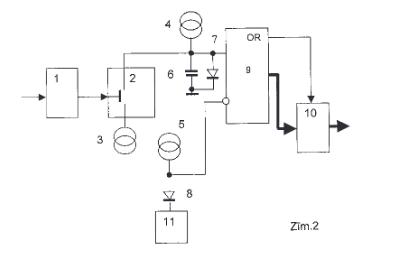
Latvian Patent No.14881. "Method and device for reduction of level-crossing read-outs in analog-to-dialog digital converter." Inventor: U.Grunde. Owner: Institute of Electronics and Computer Science. Published: 20.01.2014.
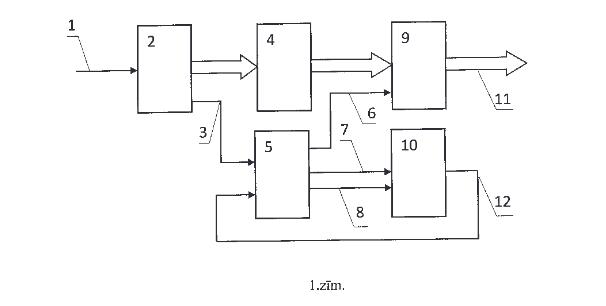
Latvian Patent No. 14803. “Clocked comparator with delay line”. Inventors: K.Krūmiņš, E.Beiners un V.Pētersons. Owner: Institute of Electronics and Computer Science: . Published: 20.01.2014.
This invention relates to measuring technique, and it can be used for comparison of instantaneous values of electrical signal with a threshold, as well as for signal equivalent time conversion. The comparator consists of two series-connected tunnel diodes and a third tunnel diode that serves as clock signal shaper. The goal of the invention is to improve the time resolution of the clocked comparator. The time resolution of the clocked comparator is characterized by a rise time of transient characteristic of the equivalent time converter built on this comparator. In order to achieve the proposed goal, between tunnel diodes a delay line is included in the circuitry.
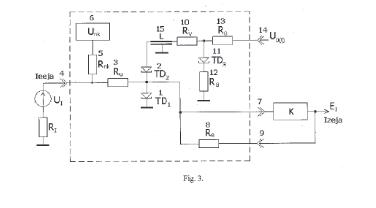
Latvian Patent No. 14802. “Coincidence circuit with an input pulse selector”. Inventors V.Bespaļko, A.Skaģeris, V.Vedins Owner: Institute of Electronics and Computer Science. Published: 20.01.2014.
The offered coincidence circuit provided with an input pulse selector can be used to extract a useful signal from the mixture of the signal and noise upon the criterion of the simultaneous appearance of the signal at the outputs of several sensors. As opposed to known coincidence circuits the proposed circuit has extended functional possibilities, because, due to the presence of an analog switch and a delay element, the circuit outputs the selected signal with its amplitude and shape preserved. Such functional extension is useful in the case when parameters, such as the amplitude and shape of coinciding sensor signals, are informative. Besides, the resolution time of the proposed circuit does not depend on the duration of input pulses, which increases the effectiveness of the coincidence detection. The proposed coincidence circuit had been tested in the satellite laser ranging experiments and made it possible to perform the ranging during the day time. At that, the possibility of detecting the amplitudes of the photo-detector pulses for correcting the measured distance from a satellite had been preserved.
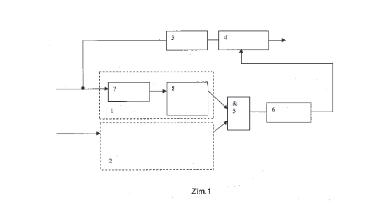
Latvian Patent No. 14767 “Former of excitation pulses for symmetrical Ultra-wideband (UWB) antenna”. Inventors: M.Greitāns, V.Aristovs, G.Šūpols. Owner: Institute of Electronics and Computer Science. Published: 20.11.2013.
The purpose of the invention is, by modifying circuit of prototype, to obtain a sub-nanosecond impulse former for excitation of a symmetrical ultra-wideband (UWB) antenna. The pulse former consists of two coaxial cable segments with length L and characteristic impedance Z 0 , direct current voltage supply U, charging current limiting resistor R, switch element – avalanche transistor T, symmetrical antenna and asymmetrical pulse former balancing transformer Tr.
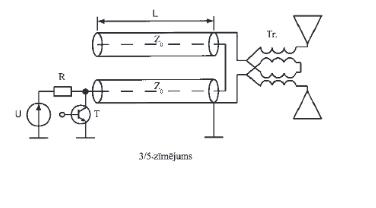
Latvian Patent No. 14764. "The method for evaluation of random errors of precise meters" Inventor: V.Bespaļko, J.Buls, A.Ribakovs, A.Skaģeris. Owner: Institute of Electronics and Computer Science. Published: 20.11.2013.
The invention concerns the area of measuring hardware metrology, particular estimation of random error of meters. The method supposes multiple measuring of permanent test signal and statistical measuring results processing and includes the following operations:
- in every i-th measuring cycle the test generator signal is being measured simultaneously by two meters
A and B, and the obtained results Ai and Bi are being saved;
- the measuring cycles are repeated multiply (n times), as a result arrays {AI}n i=1 , {Bi} n i=1 ; of measuring results are accumulated;
- for the measuring results the arrays the covariance cov ( A, B ) and variances D[A] and D[B] ere calculated;
- variances D[a] and D[b] of random errors components of each meter are estimated according to the relationships:
D[a] = D[A]- cov (A,B),
D[b] = D[B]- cov (A,B).
The offered method just as well known „three-cornered hat” method is useful for precise instrumentation testing. The offered method implementation is easier since the known method is based on excluding of test generator signal instability influence (that requires for applying three measuring channels), but the offered method is based on the evaluation of this instability (it’s enough with two measuring channels).
Latvian Patent No.14730. "Stroboscopic comparator" Inventor: K.Krūmiņš, E.Beiners, V.Pētersons. Owner: Institute of Electronics and Computer Science. Published: 20.11.2013.
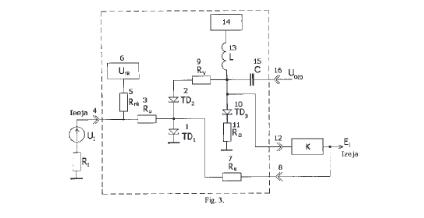
Latvian Patent No. 14691. “Monostable multivibrator”. Inventors: V.Bespaļko, A.Mezeriņš. Owner: Institute of Electronics and Computer Science: . Published: 20.06.2013.
The proposed monostable multivibrator relates to precision pulse forming electronics, and it can be applied for generation of stable duration pulses insensitive to temperature variation. The occurrence of the input trigger pulse 1sets the trigger into active state. The initial state of the trigger 2 is restored via the reset circuit 3 (implemented by cable delay line) and comparator 4. As a result, the output pulse 6 is generated with a predetermined duration defined by the reset circuit 3 and comparator 4 delays. The value of the delay introduced by the comparator may be controlled by the voltage source 5 level applied to comparator inverse input. The voltage source 5 level may be made dependent on the temperature variation (for example by the use of thermistors). If the relationship between the temperature variation and instant monostable multi - vibrator output pulse duration variation is known, then the voltage source 5 level is set to compensate the monostable multivibrator output pulse 6 duration variation. As a result, instant monostable multivibrator circuit is characterized by high precison, since its output pulse duration provides high stability irrelative to ambient temperature variation.
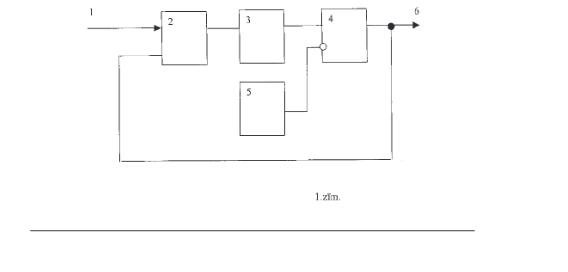
Latvian Patent No. 14641 “Equivalent time sampling convertor of comparator type" inventors: K.Krūmiņš, E.Beiners, V.Pētersons. Owners: Institute of Electronics and Computer Science. Published: 20.02.2013.
The invention relates to measuring technique, and it can be used for sampling conversion of electrical signals. Invention aims to improve performance of sampling converter being of comparator type, which is built on clocked comparator; in particular the invention aims to get converter “zero” level permanence of signal to be converted for connected or disconnected signal source with an arbitrary internal resistance. To achieve this goal clocked comparator’s 1 signal input 2 is connected to the “zero” level shift compensation resistor 7, and the resistor’s second output is connected to the direct voltage source 8, which is set at a voltage such that the connecting or disconnecting of the source signal being converted with an arbitrary internal resistance do not change the “zero” level of the converter output.
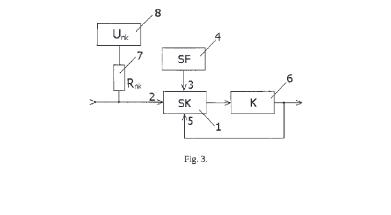
http://www.lrpv.gov.lv/sites/default/files/media/vestnesis/20130220.pdf
Latvian Patent No. 14622 "Zigzag antenna, which constructively mated with the coaxial cable." Inventors: M.Greitāns, V.Aristovs, G.Šūpols. Owner: Institute of Electronics and Computer Science. Published: 02.20.2013.
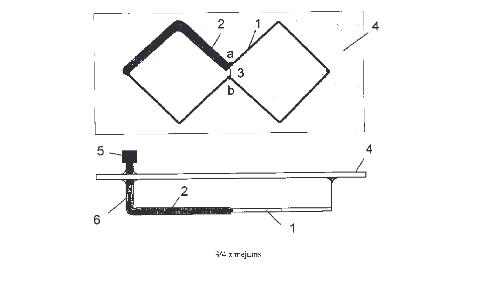
http://www.lrpv.gov.lv/sites/default/files/media/vestnesis/20130220.pdf
Latvian Patent No. 14455 “The method of evaluation of precision generators period jitter”. Inventors: V.Bespaļko, J.Buls. Owner: Institute of Electronics and Computer Science. Published: 20.03.2012.
An invention is related to the measurement technique, particularly the technique of the period jitter (short instability) measurements for precision generators. As to the offered method the measurements of defined number of n sequential periods Ti of the researched generator are being made, and each i-th period is measured by two measurement channels A and B. The evaluation of the period jitter of the researched generator is defined from the covariance evaluation for accumulated arrays and of measurement results. The correct evaluation is possible if the condition of independence of both channels measurement inaccuracies ai and bi is fulfilled ().
In the offered method the bigger or smaller period measurement inaccuracy leads just to bigger or smaller dispersion of the attainable jitter estimates, but repeating measurement cycles N times increases the precision of evaluation times. It is possible to obtain in similar way the evaluations of the jitter of time intervals, which are being generated by the precision generators. Experiments showed that using of the offered method allows obtaining evaluations of subpicosecond jitter of both the period and time intervals that are being generated by the precision generators.
http://www.lrpv.gov.lv/sites/default/files/media/vestnesis/20120320.pdf
Latvian Patent No.14358 “Calibration method for time-to-code interpolation converter” Inventors: J.Artjuhs, V.Bespaļko, J.Buls, A.Mezeriņš. Owner: Institute of Electronics and Computer Science. Published: 20.05.2011.
Invention is related to time-to-code interpolating conversion of event instants when the direct reading of a clock counter is combined with an interpolation that performs measurement of the fractional part of the period T0 of the clock pulse signal, which corresponds to the time interval between the event instant and the next following clock pulse. The instability of the interpolator characteristics represents a problem, which can be reduced by an interpolator calibration done prior to measurements. A specific sequence of input pulses representing event instants is measured to perform the calibration. The fractional parts of the period T0, which are resulted from each input pulse, are converted into interpolation codes. The frequencies of realizations of every code are counted. The interpolation transfer function as time versus code characteristic is estimated by sequential adding of these frequencies. The specific calibration sequence is such that the interpolated fractional parts of non-synchronism are evenly distributed within interval [0, T0]. Therefore the offered method makes it possible to determine the real transfer function of the interpolator so as to perform the necessary correction of the interpolation results. That significantly improves the interpolation precision and also allows to considerably simplify the interpolator circuitry.

http://www.lrpv.gov.lv/sites/default/files/media/vestnesis/20110520.pdf
LR patents Nr. 14280 “Pikosekunžu impulsu formētājs ar IMPATT diodi”. Izgudrotāji: V.Aristovs, M.Greitāns, E.Hermanis. Īpašnieks: Elektronikas un datorzinātņu institūts. Publicēts 20.02.2011.
Pikosekunžu impulsu formētājs ar IMPATT diodi ar ierosmes impulsu ieeju, kurš satur impulsu ģeneratoru, zemfrekvenču filtru, inversās nobīdes shēmu, IMPATT diodi slēgumā, kurā ierosmes ieeja ir savienota ar impulsu ģeneratora ieeju un inversās nobīdes shēmas izeja ir savienota ar zemfrekvenču filtra ieeju, kura izeja ir pieslēgta IMPATT diodes katodam, kas raksturīgs ar to, ka ir izveidots papildu buferinvertors, kura ieeja ir savienota ar impulsģeneratora izeju, un ir izveidots otrs zemfrekvences filtrs ar ieeju, kas savienota ar invertējošā bufera izeju, un ar izeju, kas savienota ar IMPATT diodes katodu, bet slodze ir pievienota IMPATT diodes anodam un iekārtas izejai.
2. Pikosekunžu impulsu formētājs saskaņā ar 1.pretenziju, kas raksturīgs ar to, ka impulsu ģenerators izveidots uz lavīntranzistora bāzes, kura impulsi, ieregulējot to amplitūdu un ilgumu pie IMPATT diodes inversas nobīdes, uz tās p/n pārejas veido negatīvu diferenciālo pretestību, pie tam pārejas procesā veidojas kristāla atomu triecienjonizācija ar ātri kustīgiem elektroniem un caurumiem, kas rada lavīnveidīgu procesu caur IMPATT diodi.
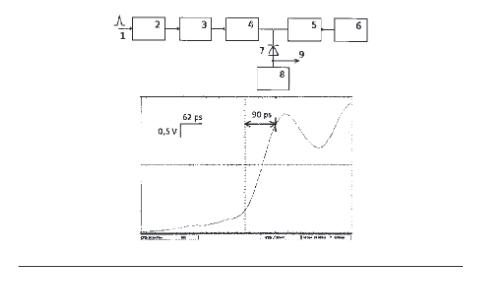
http://www.lrpv.gov.lv/sites/default/files/media/vestnesis/20110220.pdf
LR patents Nr. 14005 “Interpolācijas metode “laiks-kods” pārveidošanai”. Izgudrotāji: J.Artjuhs, V.Bespaļko, J.Buls, V.Vedins. Īpašnieks: Elektronikas un datorzinātņu institūts. Publicēts 20.11.2009.
1.Interpolācijas metode, lai pārveidotu laiku par kodu, kas ietver sekojošas operācijas: sākuma sprieguma fiksāciju uz uzkrājošā kondensatora; laika palīgintervāla veidošanu, sākot no ieejas signāla pienākšanas brīža; palīgsignāla veidošanu, uzlādējot uzkrājošo kondensatoru palīgintervāla laikā un tam sekojošo kondensatora izlādēšanu līdz sākuma sprieguma sasniegšanai; palīgsignāla uz uzkrājošā kondensatora apstrādi, atšķirīga ar to, ka palīgsignāla uz uzkrājošā kondensatora apstrāde notiek, veicot šī signāla analogciparu pārveidošanu (ACP) laika momentos, kad pienāk taktsimpulsi, un atbilstoši ACP rezultātiem tiek fiksēts palīgsignāla veidošanas fakts, pirmais un trešais ACP rezultāts tiek saglabāts atmiņā, betinterpolācijas rezultāts ir saglabāto ACP rezultātu starpība.
2.Pirmajā punktā aprakstītā metode, kas atšķirīga ar to, ka laika palīgintervāla ilgums tiek fiksēts vienāds ar pusotru takts periodu, pie tam, veidojot palīgsignālu uzkrājošā kondensatora uzlādēšanas laikā, spriegums uz kondensatora taktsimpulsu perioda laikā tiek mainīts no ACP rezultāta darba diapazona sākumā līdz ACP rezultātam darba diapazona beigās, un uzkrājošā kondensatora izlādes laikā izlādes strāva tiek nodrošināta vienāda pēc absolūtās vērtības ar uzlādes strāvu, bet ar pretējo zīmi
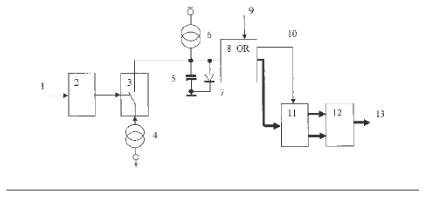
http://www.lrpv.gov.lv/sites/default/files/media/vestnesis/20091120.pdf
LR patents Nr. 13942 “Digitālu pelēko toņu attēlu analizators”. Izgudrotāji: I.Mednieks, A.Skaģeris. Īpašnieks: Elektronikas un datorzinātņu institūts. Publicēts 20.08.2009.
Digitālu pelēko toņu attēlu analizators, kas ieejās saņem attēla katra pikseļa gaišumam atbilstošu paralēlo kodu, pikseļu un rindu taktsignālus un satur filtru mainīgā fona izslēgšanai, kas atšķiras ar to, ka ir paredzēts vienlaicīgai attēla r rindu nepārtrauktai analīzei pa r x r pikseļu izmēra attēla fragmentiem un satur: r-1 virknē slēgtas FIFO tipa operatīvās atmiņas, kuru garums sakrīt ar pikseļu skaitu attēla rindā; r x r pikseļu paralēlā koda reģistrus; aritmētisko operāciju moduli, kas nepieciešams attēla fragmentu pikseļu kovariāciju raksturojošā koeficienta aprēķināšanai katram analizējamajam attēla fragmentam; koda komparatoru aprēķinātā koeficienta salīdzināšanai ar uz prakses pamata izvēlētu līmeni, lai attēlā atklātu par fonu tumšākus apgabalus, kas norāda uz svešķermeņu klātbūtni kontrolējamajā objektā; trauksmes signālierīci, kas bloķē iespējamos neīstos trauksmes signālus, kas var rasties analizējot ikvienas attēla rindu grupas pēdējos r-1 pikseļus, kad kopā ar šiem pikseļiem analizēti tiek nākamās jaunās attēla rindu grupas pirmie pikseļi, kas ģeometriski atrodas attēla pretējā pusē.
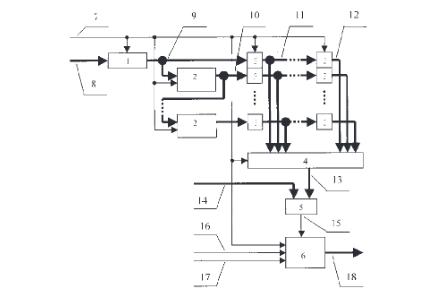
http://www.lrpv.gov.lv/sites/default/files/media/vestnesis/20090820.pdf
LR patents Nr. 13857 “Digitālu rentgena attēlu analizators svešķermeņu atklāšanai objektos reālā laika režīmā”. Izgudrotāji: I.Mednieks, A.Skaģeris. Īpašnieks: Elektronikas un datorzinātņu institūts. Publicēts 20.03.2009.
1. Bronzas nepārtrauktās liešanas elektromagnētiskais kristalizators, kas atšķirīgs ar to, ka korpusa (1) centrālajā atverē caur tā izeju (22) ir ievietots konusveida ieliktnis (2), starp ieliktņa (2) cilindrisko izeju (21) un korpusa (1) augšējo virsmu ir ievietots korķis (5), korpuss (1) un ieliktnis (2) ir savienoti ar skrūvēm (24) un uzgriežņiem (25), pie kam uz korpusa (1) apakšējās daļas caur "O" veida gredzenu (6) ir uzstādīts vāciņš (3) un piestiprināts ar skrūvēm (32), korpusa (1) ejā (41) ir ievietots gredzens (4) un piestiprināts korpusam (1), turklāt caurumos (8) ir uzstādīti savienojumi (9) un piemetināti korpusam (1).
2. Bronzas nepārtrauktās liešanas elektromagnētiskais kristalizators saskaņā ar 1.punktu, kas atšķirīgs ar to, ka starp savienojumiem (9) un gredzenu (4) ir izvietoti daudzi induktora (101) vijumi, kuri caur vadītājiem (103) ir savienoti ar invertoru (102).
3. Bronzas nepārtrauktās liešanas elektromagnētiskais kristalizators saskaņā ar 1.punktu, kas atšķirīgs ar to, ka šķērsprofilu diametri D2 un D1 atrodas aptuvenā attiecībā D2:D1 = 1:(3,9 līdz 1,77), šķērsprofilu diametri D4 un D3 atrodas aptuvenā attiecībā D4:D3 = 1:(1,684 līdz 1,262), bet garumi L2 un L1 garums atrodas aptuvenā attiecībā L2:L1 = 1:(1,208 līdz 1,16).
4. Bronzas nepārtrauktās liešanas elektromagnētiskais kristalizators saskaņā ar 1.punktu, kas atšķirīgs ar to, ka korpusa (1) centrālajā atverē ir izveidotas spirālveidā izkārtotas ribas (15), kuras savā starpā veido spirālveida kanālus (14), un ar to, ka korpusā (1) izveidoti caurumi (8, 10, 11, 12, 13), pie kam caurumi (11, 12) ir noslēgti ar necaurejošu korķi (7), kas piemetināts korpusam (1).
5. Bronzas nepārtrauktās liešanas elektromagnētiskais kristalizators saskaņā ar 1. punktu, kas atšķirīgs ar to, ka konusveida ieliktnī (2) ir izveidota centrālā konusveida atvere (26), bet cilindriskajā izejā (21) ir izveidotas daudzas atveres (23).
6. Bronzas nepārtrauktās liešanas elektromagnētiskais kristalizators saskaņā ar 1.punktu, kas atšķirīgs ar to, ka apakšējā vāciņā (3) ir izveidota centrālā atvere (33), kā arī liels skaits apļveida atveru (31) un liels skaits apļveida atveru (34).
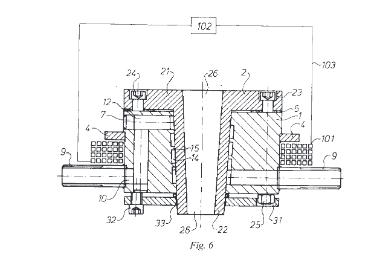
LR patents Nr. 13770 “Metode un ierīce signāla laika-frekvences reprezentācijas paaugstinātas izšķirtspējas iegūšanai”. Izgudrotāji: M.Greitāns. Īpašnieks: Elektronikas un datorzinātņu institūts. Publicēts 20.09.2008.
LR patents Nr. 13686 “Laika intervālu mērītājs un tā kalibrēšanas metode”. Izgudrotāji: J.Artjuhs, V.Bespaļko, K.Lapuška, A.Ribakovs. Īpašnieks: Elektronikas un datorzinātņu institūts. Publicēts 20.05.2008.
Reģistrēts LR patents Nr. 15529 A " ANTENAS SISTĒMA ZEMVIRSMAS RADARAM AR ANTENĀM, KAS NOVIETOTAS VIENA OTRAI PRETĪ. ANTENNA SYSTEM FOR UNDERGROUND RADAR WITH LOCATION OF THE ANTENNAS OPPOSITE EACH OTHER". Izgudrotāji: Vladimirs Aristovs. Īpašnieks: Elektronikas un datorzinātņu institūts, publicēts 20.10.2020.g.
LR patent No 15560 A, ”METHOD FOR EVALUATING ACCURACY OF A TIME STAMP SHAPER”. Inventors: Vladimirs Bespaļko, Igors Buraks, Aleksandrs Kalinovskis, Kalvis Salmiņš. Applicant: Institute of Electronics and Computer Science. Published 20.03.2021.